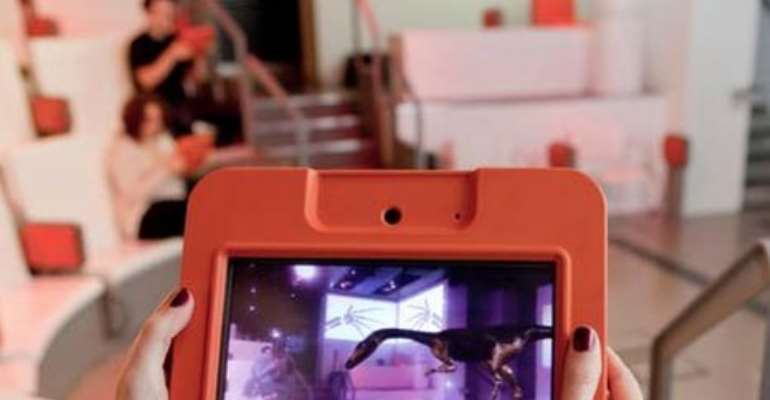DINOSAUR FOSSILS BROUGHT TO LIFE BY TECHNOLOGY EXHIBIT

Ailsa Barry from the museum explains how the film will brings fossils to life
Dinosaurs and our own human ancestors are set to come alive.
The Natural History Museum – more famous as the home of ancient fossils – is using augmented reality in a novel way to reanimate extinct creatures.
With the aid of hand-held computers, and a new interactive film, viewers will be able to see extinct hominids and dinosaurs walking around the room they are sat in.
The aim of the film is to “breathe new life” into the story of evolution.
The film is being shown free to the public in the museum's new Attenborough Studio.
Presented by Sir David Attenborough himself, the film traces life back to its earliest origins, explaining the characteristics that humans share with our most primitive ancestors. You really get a sense that the dinosaur is in the room with you
Ailsa Barry, the Natural History Museum's head of interactive media
According to the museum, it is in essence an educational film, aimed primarily at school children. But the hand-held computers enable those children to take part.
The hand-held devices, which look like giant smart phones, are designed to be sufficiently robust to withstand being prodded and dropped by dozens of enthusiastic children.
As well as acting as individual viewing screens, they enable each participant to examine and manipulate virtual specimens.
Animal gifts
Sections of the story are told by the museum's scientists. A new specimen appears on the screen when a scientist presents it to the audience.
These “gifts” – which include an elephant's tooth, a primitive flatworm and a lungfish – can be selected and examined more closely.
The aim is to highlight surprising anatomical characteristics that humans share with very primitive ancestors.
Viewers can see dinosaurs and hominids walking around in front of them
The museum hopes that one element of this interaction will stand out in particular: the computer generated images of the dinosaur Coelophysis, which, when viewed through the screens, appears to be in the studio with the audience.
The little computer-generated dinosaur can even be followed around the room.
“We wanted to tell the story of evolution, because that's core to what the museum does,” said Ailsa Barry, the Natural History Museum's head of interactive media.
3D map
Ms Barry explained to the BBC that the AR technology was based on an infrared “map” of the room.
A series of infrared light-emitting diodes around the studio act as anchor-points, so the computer-generated images on each of the screens can be projected into the correct part of the room.
And, in this film, there is a new 3-dimensional aspect to the technology.
“In each hand-held computer, there's a camera,” Ms Barry explained.
“By working out the position of the camera relative to the room, the CGI models are rendered in the correct orientation to each viewer.”
“So you really get a sense that the dinosaur is in the room with you.”
The museum is also hosting a follow-up online element to the film on its website.
Sir David Attenborough said of the project: “It is my hope that through this innovative film we can continue to inspire the next generation to take a step towards securing our planet's future.”
The film, Who do you really think you are? will be screened daily from Tuesday 30 November.
